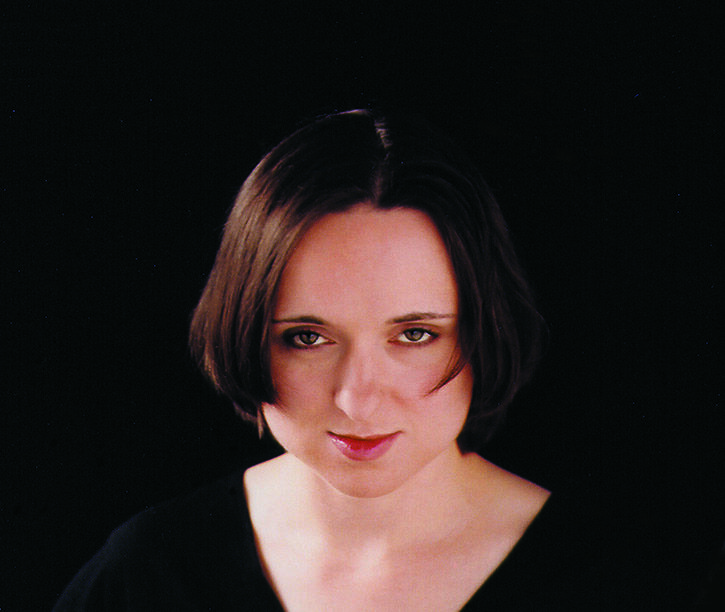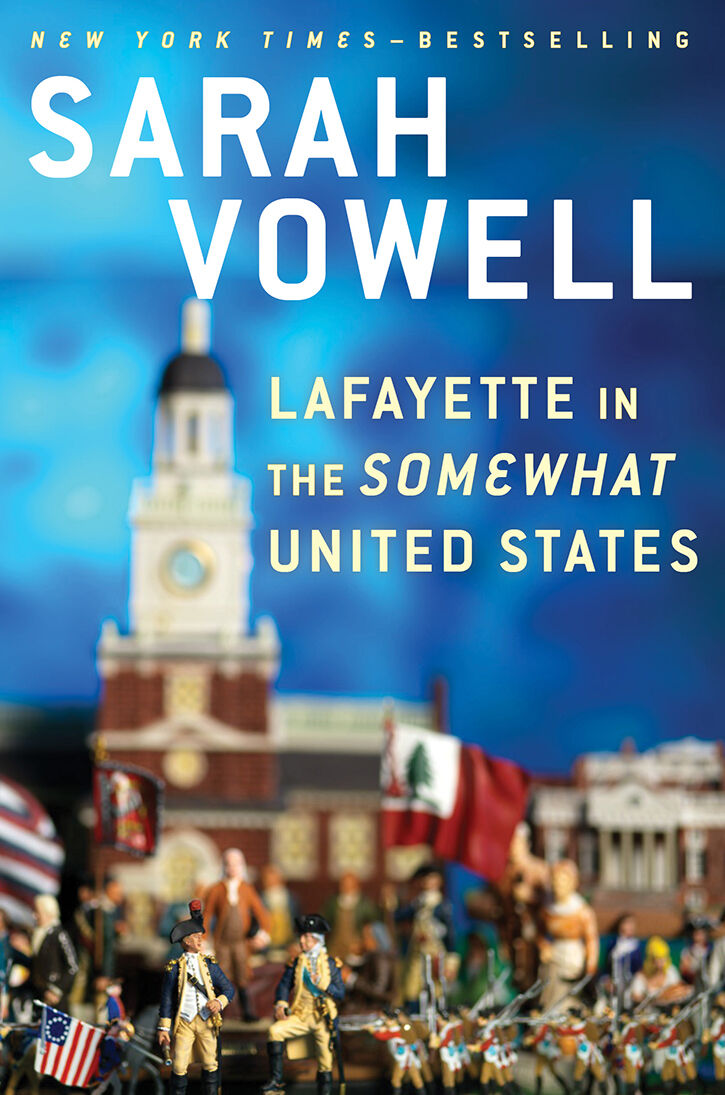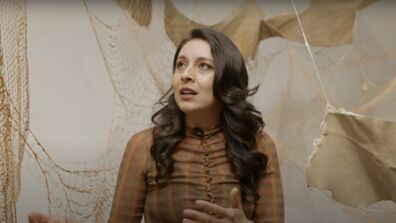
Jerks and Oranges

by Ana Sekler (MA 2016)
Sarah Vowell (MA 1999) studied art history at SAIC and wrote her thesis about the Fluxus movement, titled “Danger Music: a Fluxautopsy of the death of art; destroying musical instruments, destroying music in the early history of Fluxus.” Since then, she has become a New York Times–bestselling author of seven nonfiction books on American history and culture—covering subjects that include the Puritans, the Americanization of Hawaii, and the Marquis de Lafayette. From 1996–2008, she was a regular contributing editor for This American Life, and in 2004, she was the voice of Violet in the Pixar film, The Incredibles.
From radio to literature to the big screen, your work experience spans across media. Can you describe your experience working with these different forms of media?
Once I started working on the radio show, and then when I started writing more of my own books, I was drawn to being more of a whole person than you can be in print…especially magazines because they have sections.
I remember right around the time I felt like I was really becoming proud of what I was doing as a writer, all of my magazine stories were getting killed because the editor would be like, “We don’t know where to put this. This is funny, and then a bunch of people die, and then it’s not funny, and then I mean, where do we put this?” So I think where things were going is what I’m doing now. I do try to be a whole person, in the books especially because there are jokes in them, and I just feel like history is so fascinating, and to me, there’s a lot of joy in what I do. But then on the other hand, I write about American history, and there are a lot of hard truths one has to confront in that topic. The books are kind of tonally full, let’s say.

How did you start writing about American history?
When I was working on This American Life in the ‘90s, I was just doing a lot of different stories about a lot of different things: my background, movies, and music.
And then I made a documentary about the Trail of Tears, the Cherokee removal from the Southeast to Oklahoma, because that is how my ancestors were removed to Oklahoma. And that, I would say, changed my life. I sort of fell into writing about American history.
How do you choose topics for your books?
There’s something about these people that I’m drawn to. I don’t write about the noble plight of blacksmiths. I write about the people who speak up. And that maybe comes from a background in the arts…because when you study art history, all your heroes, all the great artists—almost all of them—are jerks. The best you can hope for is a garden-variety philanderer.
So I think when you come from the arts, you get used to the idea of terrible people making beautiful things. So it makes working with Thomas Jefferson a much more pleasant and compassionate project. When you come from the arts, you just get used to the fact that nobody’s perfect, and often the least perfect people make the most perfect contributions.
Were there any SAIC professors or courses that were particularly significant in your career path?
I took classes with Simon Anderson [Associate Professor, Art History, Theory, and Criticism]—classes about post-war, avant-garde movements like Fluxus, and the legacy of Dada…. One of the things he does that I loved was he teaches art history as a lab class. We re-created the first Allan Kaprow “Happening.” When it got to the point when the person was slicing oranges, the whole place filled up with the fragrance of oranges, and for some reason that was a really important educational moment for me.
Anderson also took us to the Southwest desert to look at earthworks from the 1970s, and one of them was Walter De Maria’s The Lightning Field in New Mexico. It’s this field of lightning rods, and you have to stay there for a full 24 hours. I think that those two experiences, for some reason, looking at the way the light changed with the backdrop of those poles or smelling the fragrance of those oranges being sliced in that re-creation…made me way more awake to the physical world and just generally made me more alert, which has certainly served me well as a journalist and as a writer.
Sarah Vowell will read from her most recent book, Lafayette in the Somewhat United States, on October 29 as part of the Visiting Artists Program’s Distinguished Alumni Lecture Series and the Chicago Humanities Festival.
